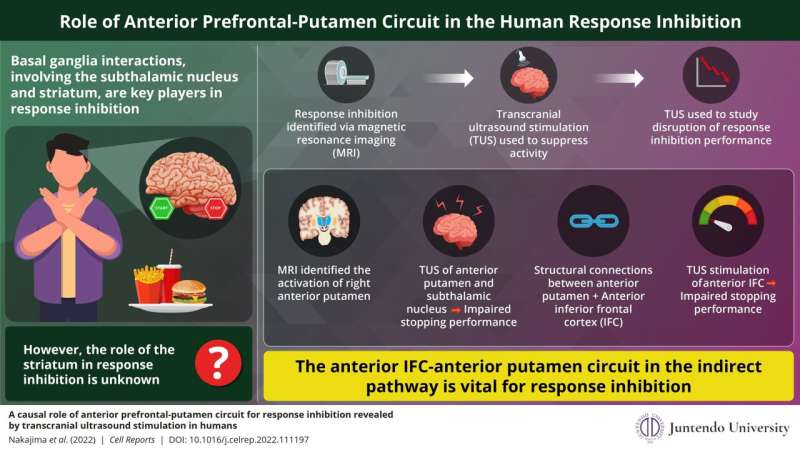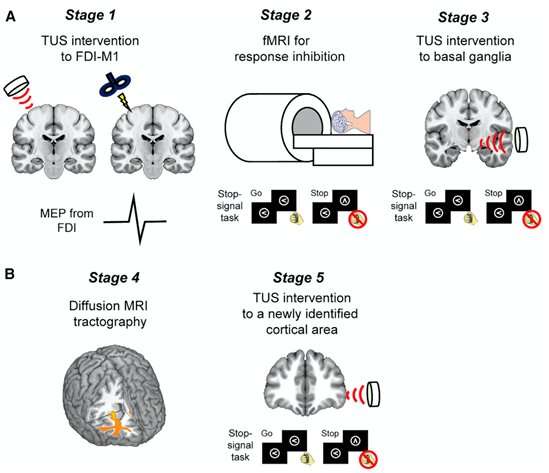Revealed: Anterior prefrontal-putamen circuit essential to response inhibition in humans

The prefrontal-subthalamic neural circuit within the human brain is responsible for stopping inappropriate responses. The striatum in the brain is the main route of direct or excitatory and indirect or inhibitory signals, and this indirect pathway is thought to serve as an alternative stopping mechanism in humans. However, we do not have a clear understanding of how stopping is managed by the prefrontal-striatal indirect pathway.
Now a group of researchers, under the guidance of Dr. Takahiro Osada at Juntendo University School of Medicine, explains the mechanism of the prefrontal-striatal indirect pathway. The researchers have published their findings in Cell Reports. "We have found a new neural network in the brain that is involved in inhibiting inappropriate responses. This work will shed light on the disordered processes curtailing movement following injury and may even be relevant to managing neuropsychiatric disorders," says Dr. Osada, highlighting the significance of the study.
The researchers leveraged low-intensity transcranial ultrasound stimulation (TUS) to probe stopping responses in the basal ganglia region of the human brain. While neuroimaging studies have previously detected activation within the striatum during response inhibition studies, specific regions in this area could not be pinpointed. TUS is advantageous as the technology allows for non-invasive stimulation of deep brain structures with high spatial accuracy down to a few millimeters.

The team first used functional magnetic resonance imaging (fMRI) to visualize which regions of the basal ganglia that were being activated during this response inhibition. After this, responses within the basal ganglia were stimulated with TUS to examine the disruption of response inhibition performance. The researchers then used diffusion MRI analysis to see if the cerebrocortical region of the brain could function as a counterpart of the striatum. Finally, the team used TUS to understand how essential the cortical counterpart was during response inhibition.
The fMRI results confirmed there was activity in the right anterior putamen during response inhibition. Importantly, TUS directed at both the anterior putamen and subthalamic nucleus regions resulted in significantly impaired stopping performance in test subjects. "We were also able to identify a prominent linkage between the anterior putamen and the right anterior inferior frontal cortex (IFC). When we directed TUS at the right anterior IFC, stopping performance was once again significantly impaired," elaborates Dr. Osada.
The group is confident the findings will aid in further research exploring neural mechanisms of response inhibition, given that they identified the role of the anterior IFC-anterior putamen circuit—a new cortical-basal network—in inhibiting inappropriate responses. This is promising as it throws open the door to not merely examining individual regions of the brain but conducting experiments at the whole brain level.
But what are the broader implications for the team's findings? Dr. Osada concludes, "I firmly believe this research can help us develop better artificial intelligence as we gain insight into brain functions using tools like TUS and fMRI. Dysfunction of the cortical-basal ganglia network is tied to neuropsychiatric disorders and there is much to be uncovered using our methodology in terms of the pathophysiological mechanisms behind these conditions."
More information: Koji Nakajima et al, A causal role of anterior prefrontal-putamen circuit for response inhibition revealed by transcranial ultrasound stimulation in humans, Cell Reports (2022). DOI: 10.1016/j.celrep.2022.111197



















